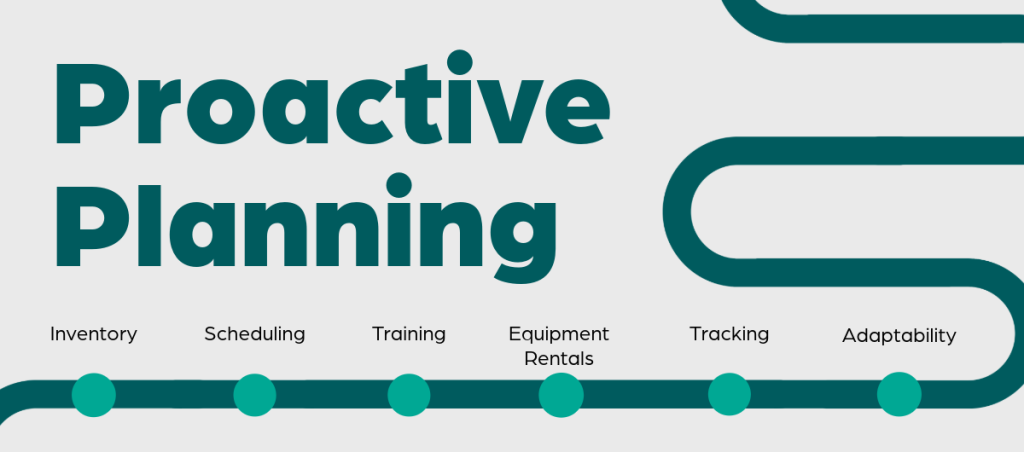
In the competitive landscape of commercial construction, maintaining project timelines and maximizing efficiency can make or break your project's success. The effective use of construction equipment plays a crucial role in optimizing schedules, minimizing costs, and enhancing productivity. In this article, we will explore some of the ways to streamline your construction operations.
Before diving into optimization techniques, it’s essential to understand why equipment efficiency matters. According to industry studies, a significant portion of construction costs is related to equipment management, including rental fees, maintenance, and labor. By maximizing the effectiveness of your equipment, you can:
 Proactive Planning: The Key to Efficient Equipment Use
Proactive Planning: The Key to Efficient Equipment Use1. Conduct a Comprehensive Equipment Inventory
Before planning your construction schedule, take the time to evaluate your equipment inventory. Understand the capabilities and limitations of each piece of machinery. This proactive approach allows you to select the right equipment for the job, avoiding last-minute adjustments that can lead to delays.
2. Schedule Equipment Usage Wisely
To optimize your construction schedule, it’s important to plan equipment usage in conjunction with project milestones. Anticipating peak activity periods where equipment will be in high demand allows you to strategically time rentals and avoid bottlenecks. Consider using a Gantt chart or calendar view to visualize your equipment schedule alongside project stages.
3. Standardize Equipment Training
Ensure that all operators are adequately trained on the equipment they will be using. Standardizing training procedures enhances safety and reduces the likelihood of operational errors. This can minimize delays associated with equipment malfunctions caused by operator inexperience or ignorance of best practices.
4. Consider Equipment Rental Options
For large projects that demand a variety of specialized equipment, consider leasing machinery instead of purchasing it outright. Renting can provide flexibility, allowing you to access new and advanced equipment without the long-term financial commitment. Additionally, rental companies often provide maintenance services, further easing your management burden.
5. Track Performance Metrics
After implementing your equipment schedule, continuously monitor performance metrics. Key indicators such as equipment usage rates, rental costs, and labor productivity can provide insights into how effectively your equipment is being utilized. Analyzing this data allows you to make informed adjustments to your strategy and budget as needed.
6. Be Flexible and Adaptable
Construction projects often face unexpected changes, whether due to weather conditions, supply chain delays, or design modifications. Cultivating a flexible approach to equipment use will enable you to swiftly adapt your schedule and resource allocation to these changes without sacrificing overall project timelines.
Optimizing your construction schedule through efficient equipment use is essential for large commercial construction companies and general contractors seeking to remain competitive in the industry. By proactively planning, leveraging technology, and implementing effective processes, you can enhance your project timelines, reduce costs, and ensure smoother operations. At DW1, we understand the unique challenges faced by the construction industry and offer a wide range of rental equipment solutions tailored to meet your needs. For more insights on optimizing construction efficiency or to explore our extensive inventory, visit our website today!